Your cart is currently empty!
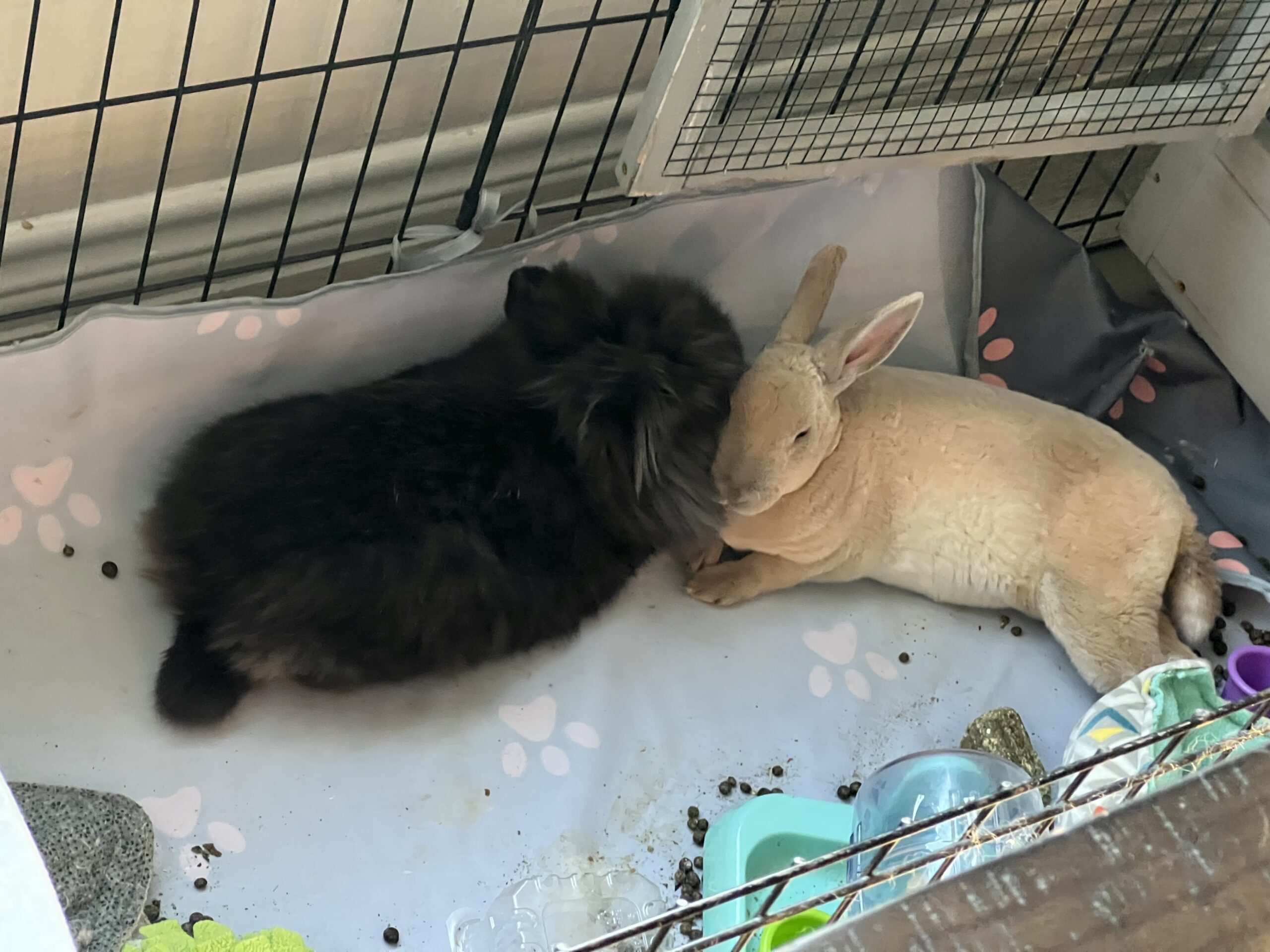
As a dedicated pet owner, providing the best home for your rabbit is likely one of your top priorities. Rabbits, with their playful spirit and endearing personalities, require more than just food and water to thrive—they need a space that’s safe, comfortable, and conducive to their physical and mental well-being. If you’re exploring the world of rabbit hutches and cages for the first time or looking to upgrade your furry friend’s current digs, you’ve come to the right place. This comprehensive guide will walk you through the different types of rabbit homes available, factors to consider in choosing the perfect one, and best practices for setting up a happy and healthy rabbit habitat.
Introduction to the Importance of a Suitable Rabbit Hutch or Cage
A well-chosen rabbit hutch or cage is more than just a shelter; it’s the foundation of your rabbit’s quality of life. Rabbits are active and curious creatures that need space to hop, stretch, and explore to maintain their physical health and mental sharpness. The right housing can also facilitate bonding and socialization, key components of a rabbit’s life.
Types of Rabbit Hutches and Cages
Wire Cages
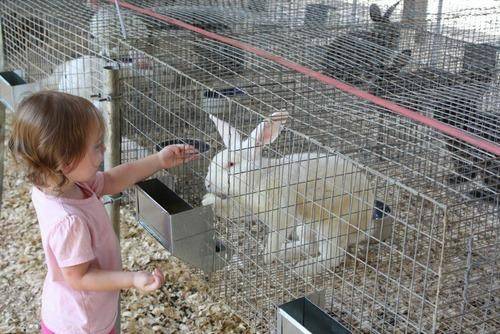
Breeders and farmers are the main users of wire cages for raising rabbits for shows or meat production. Wire cages are popular among commercial rabbit owners because they are durable and easy to clean. However, due to their hard floors, they should always be used in conjunction with a softer bedding material to protect rabbit feet from sore hocks.
While they offer practical benefits, these cages might not always provide the comfortable and enriched environment that pet rabbits, kept for companionship, require.
Indoor Hutches
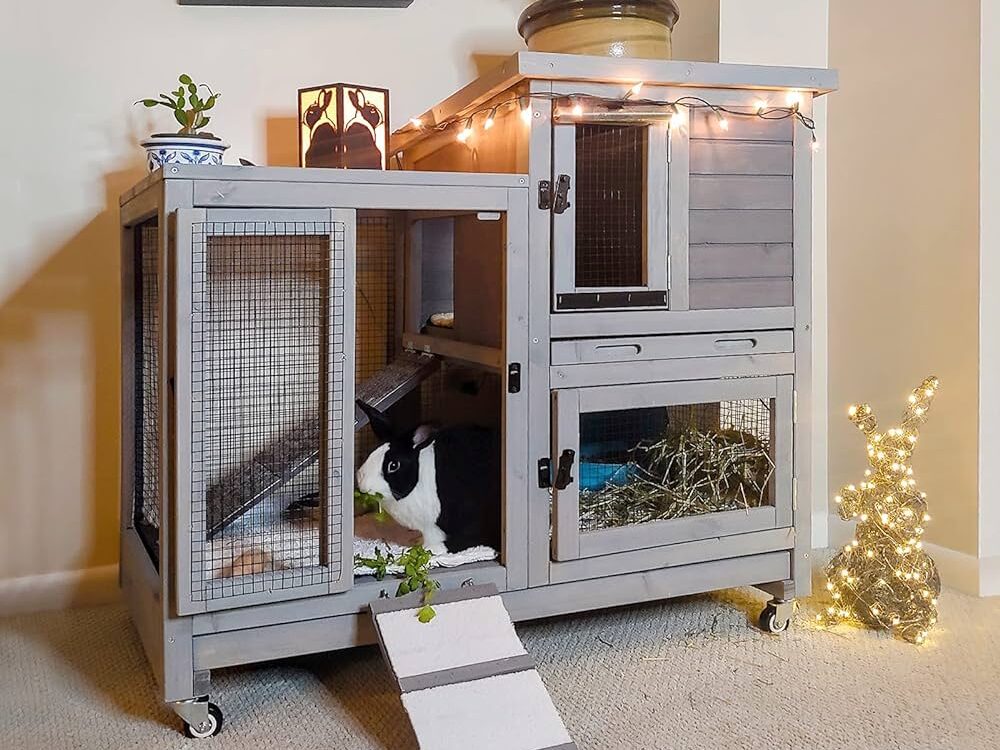
My personal favorite, these provide rabbits with a cozy and safe living space inside your home. Unlike their wire counterparts, indoor hutches provide a secure and attractive environment that promotes well-being and happiness in pet rabbits. They come in a vast array of styles, some even crafted to resemble elegant pieces of furniture, ensuring they enhance the look of your home rather than detract from it. This fusion of practicality and beauty makes indoor hutches an ideal choice for those of us who value both the welfare of our furry friends and the ambiance of our living spaces.
Outdoor Hutches

Designed to withstand the elements, outdoor hutches allow rabbits to enjoy fresh air and natural surroundings while remaining protected. It’s important to ensure these hutches are predator-proof and provide ample protection from weather extremes.
When considering an outdoor hutch, it’s crucial to take into account not only the weather conditions but also the specific breed of your rabbit. For example, an Angora rabbit, known for its thick, fluffy coat, cannot withstand the intense heat of a Texas summer. The dense fur of these rabbits can lead to overheating and health issues during hot weather. Therefore, if you reside in a region with high temperatures, it’s important to choose a rabbit breed that is more adapted to such conditions or to opt for an indoor hutch that can be kept in a climate-controlled environment. Always ensure the well-being of your pet by selecting a habitat that suits their breed-specific needs and the climate you live in.
Multi-Level Cages
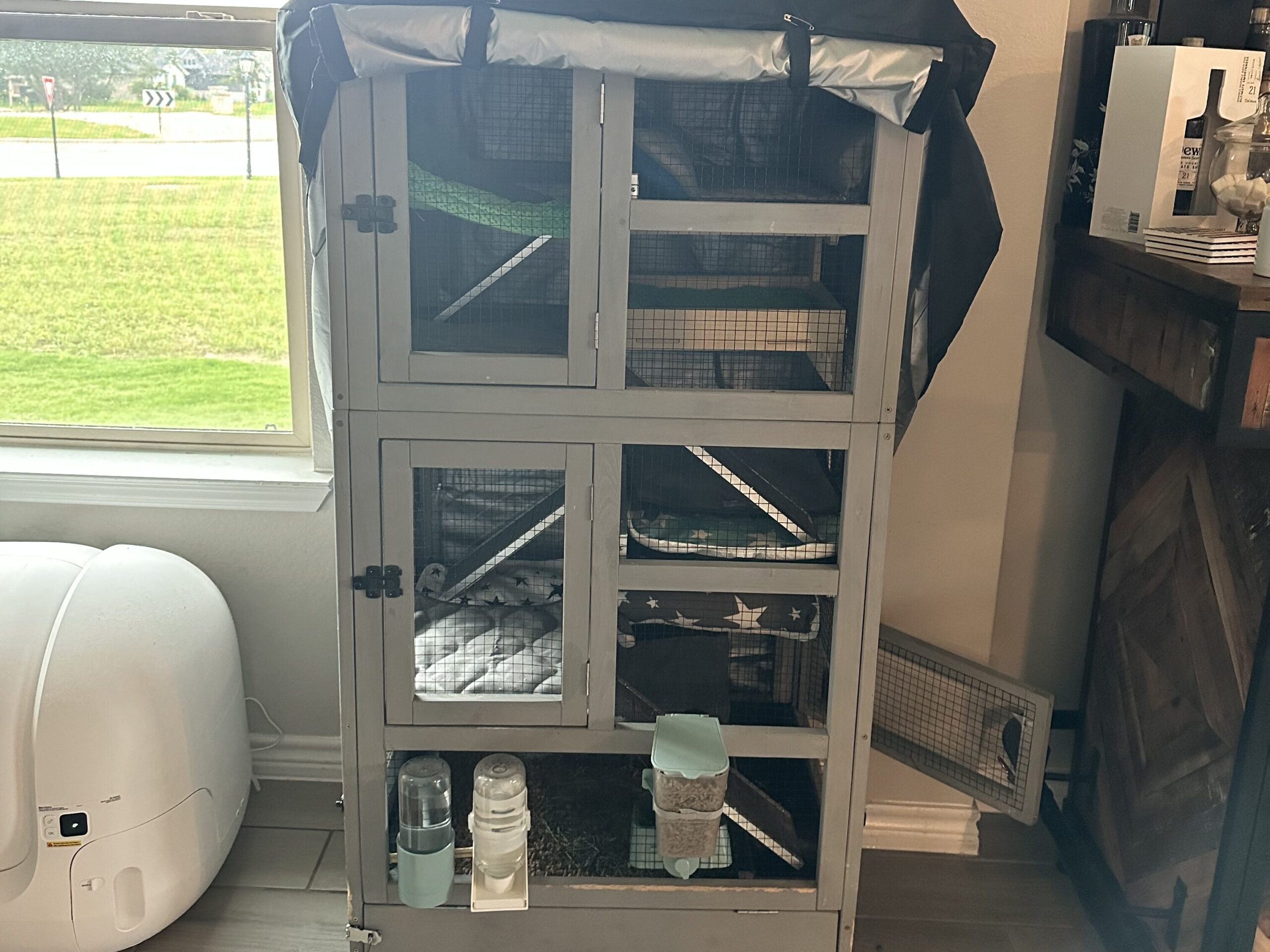
Offering rabbits more room to move, multi-level cages encourage natural behaviors such as hopping and exploring. These cages are especially good for energetic rabbits or those living in multi-pet households.
In my own experience, I’ve found a unique and dynamic solution for my rabbits’ housing needs by repurposing a multi-level cage originally designed for ferrets. My rabbits absolutely adore it! The key to successfully adapting this cage was paying careful attention to the size of the platforms. They needed to be broad enough to allow a rabbit to comfortably lie down and possess ample space for hopping from one tier to another without the risk of injury. This aspect of design minimizes the chances of accidents and ensures that the cage is a safe and joyful space for my pets.
Understanding the size of your rabbit is crucial as well. Smaller breeds, such as dwarfs or lionheads, are particularly well-suited to this type of cage due to their compact size. Their smaller stature makes navigating the levels easier and safer, preventing the strain that might occur with larger breeds.
To enhance the cage’s rabbit-friendliness, I made a few minor modifications. I added extra platforms to bridge some of the wider gaps, thereby increasing the available space and ensuring a safer environment for my rabbits. These modifications were inspired by the need to tailor the cage to support natural rabbit behaviors while also making it as comfortable and secure as possible. Through these small but significant changes, I’ve created a habitat that promotes both their physical and mental well-being, meshing seamlessly with their playful and exploratory nature.
Portable Cages
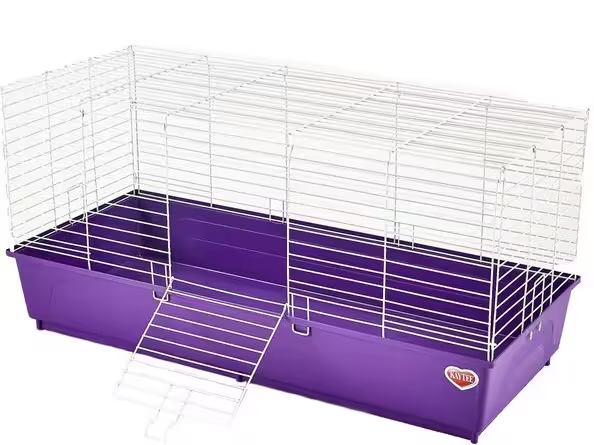
Perfect for families on the move, portable cages offer a temporary housing solution for travel, ensuring your rabbit’s safety and comfort.
It’s not uncommon for new rabbit owners to initially opt for the smaller cages commonly sold in pet stores, believing they will suffice as long-term homes. However, it’s crucial to understand that these cages often fall short of providing the space and environment rabbits need to thrive. While they may serve as suitable short-term solutions or temporary travel homes, they do not offer enough space for rabbits to exercise and explore, which is essential for their physical and mental health.
Additionally, these cages are often very exposed, offering little privacy or shelter, which can cause increased stress and anxiety in rabbits. To promote a happy and healthy life for your rabbit, opting for a more spacious and secure housing option is highly recommended, ensuring they have ample room to move, stretch, and play.
Free Roam and Dedicated Rooms
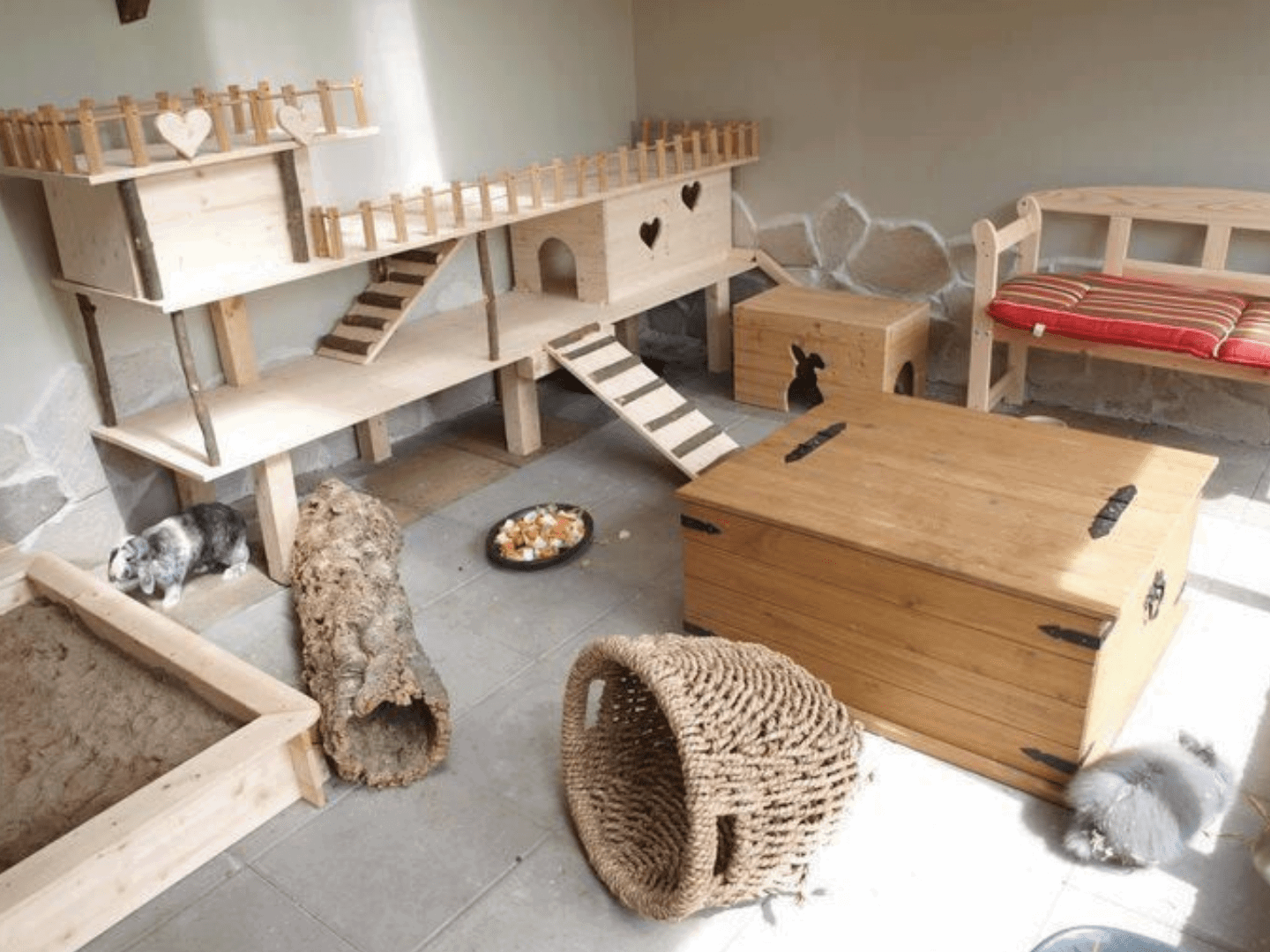
Some owners choose to give their rabbits free roam or even have a dedicated room, which can be highly enriching for the rabbit if done safely.
Rabbits are surprisingly easy to litter train, which is something I highly recommend regardless of the type of habitat you provide for them. This training not only helps in keeping their living area clean but also simplifies the cleanup process for you. However, it’s important to note that even litter-trained rabbits tend to drop little poops everywhere as part of their natural behavior, so be prepared for some cleanup outside their designated litter areas.
For those of you considering a free-roam environment for your rabbits, cord-proofing is an absolute must. Rabbits have a natural tendency to chew on virtually anything they can sink their teeth into, including electrical cords. In my experience, no cord protector has proven to be completely rabbit-proof. I’ve found that encasing cords in a metal sleeve or elevating them off the ground are the most effective methods to prevent damage. Surprisingly, my rabbits have even taken to using the cat’s automatic litter box, which has been a great solution for managing their waste efficiently.
This adaptability to litter training and the necessity for a secure environment free from potential chewing hazards highlight the importance of understanding and catering to your rabbit’s natural behaviors and needs. By taking these steps, you create a safer and more comfortable living space for your furry friends, contributing to their overall well-being and happiness.
Factors to Consider When Choosing Rabbit Housing
When selecting a hutch or cage, consider:
- Size and Space: Rabbits need ample space to move freely. The general guideline is a minimum of four times your rabbit’s stretched-out length, but bigger is always better.
- Material: The materials used in the construction of the hutch or cage should be sturdy, non-toxic, and chew-resistant to ensure your rabbit’s safety. But don’t be disappointed if they chew it up a little, they just like to round out the edges.
- Safety Features: Look for hutches and cages with secure latches and no sharp edges or small parts that rabbits could ingest.
- Ease of Cleaning: A hutch or cage with a removable tray or easy-access doors will make cleaning less of a chore.
- Weather and Environment Adaptability: For outdoor hutches, ensure that the design protects against rain, wind, and extreme temperatures, while also offering ventilation during hotter months.
- Exercise Requirements: Incorporate space for exercise, either within the housing itself or through regular supervised access to a larger, rabbit-proofed area.
Best Practices for Setting Up a Rabbit Hutch or Cage
Create a cozy and inviting space by:
- Selecting the Proper Location: Indoors, keep the hutch in a quiet but social part of your home; outdoors, place the hutch in a sheltered location out of direct sunlight.
- Adding Bedding and Accessories: Soft bedding, hideaways, and chew toys will make the space comfortable and engaging for your rabbit.
- Arranging Food and Water: Ensure easy access to fresh hay, water, and nutrient-rich foods within their living space.
The Impact of Housing on Rabbit Health and Behavior
Good housing promotes:
- Physical Health and Exercise: Ample space for physical activity helps prevent obesity and keeps your rabbit agile.
- Mental Stimulation: Enriching the environment with toys, puzzles, and regular human interaction combats boredom and encourages natural behaviors.
- Socialization: Properly introduced and supervised, rabbits can enjoy the company of their own kind or other household pets, promoting social behavior.
Personalizing Your Rabbit’s Living Space
Incorporate your rabbit’s unique personality into their home with DIY modifications and handmade toys. Not only will this make their space more enjoyable for them, but it can also be a fun project for you.
Conclusion and Recap of Key Considerations
Choosing the right hutch or cage is a crucial step in ensuring your rabbit leads a happy, healthy life. By considering size, safety, material, and the specific needs of your rabbit, you can create a sanctuary that they will love. Remember, your rabbit’s housing needs may change as they grow, so regular assessments and upgrades are essential for their well-being.
We hope this guide helps you on your journey to creating the perfect home for your rabbit. Remember, the most important thing is to provide a safe, loving environment where your rabbit can thrive.